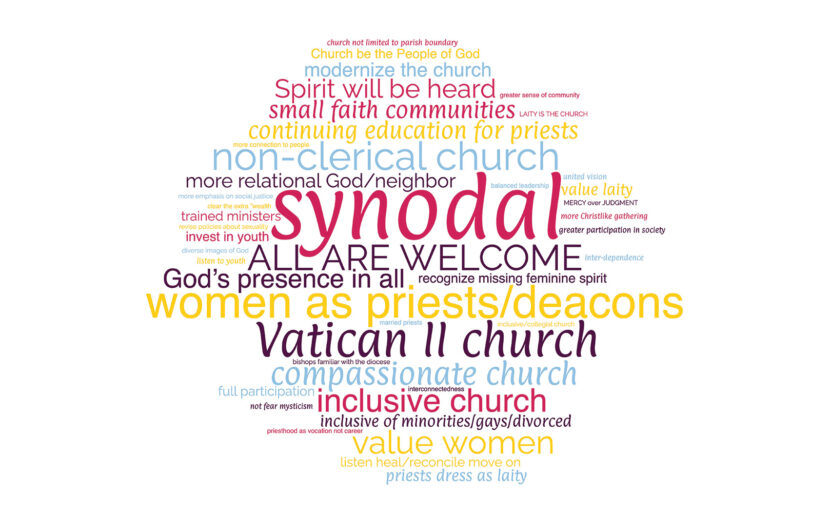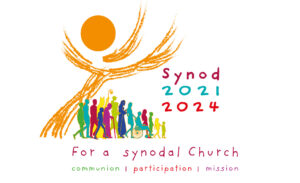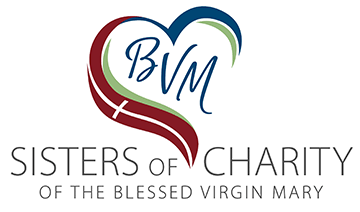Answering the Call to Synodality: Key Questions and Responses from BVMs and Associates

Graphic provided by Bay Area Conference of Associates and Religious
You are with us, Holy Spirit, as we gather together in Your name.
As You guide us, make Yourself at home in our hearts.
Teach us the way to go and how to follow Your guidance.
—Synod Prayer
Adapted by Mary (St. Christopher) Jean Ferry, BVM
What is a synod?
Synod is a Greek word translated via Latin to mean “walking with—journeying with, traveling together, an assembly, or a council.”
Synod is an ancient practice in Christianity dating back to the “Council” of Jerusalem mentioned in Acts 15. Throughout the first millennium, local churches gathered with their bishops to discuss matters related to their local situation. Over time, this practice grew to provincial (regional) and universal (ecumenical) councils that included bishops, clergy, religious, and laity.
According to Inés San Martin in her recent article, “Experts Debate the Meaning of ‘Synodality’ for the Global Church,” she states that “Synodality is a dialogical process of patient and mutual listening among and across all levels of the church. It is oriented towards enabling the church ‘to listen to God, so that with Him we may hear the cry of His people; to listen to His people until we are in harmony with the will to which God calls us.’”
In the 2018 opening of the XV Ordinary General Assembly of the Synod of Bishops on Young People, Pope Francis shared that the idea of Synod was “to plant dreams, draw forth prophecies and visions, allow hope to flourish, inspire trust, bind up wounds, and weave together new relationships.”
Key Questions
Many BVMs, associates, and friends accepted the invitation for discernment to address some key questions around one’s relationship to church. From California, Montana, Iowa, Illinois, New York, Oregon, and beyond, they gathered together in dioceses, clusters, parishes, house churches, or groups, online or in-person.
Two key questions were asked:
- What breaks your heart about the Catholic Church?
- What fills your heart about the Catholic Church?
Listening responses were centered around three areas:
- Joy expressed about the Catholic Church.
- Difficulty and obstacles facing the Catholic Church.
- Dreams/Visions for the Catholic Church.
Responses
All who attended were appreciative, positive, and glad to have an opportunity to share their voice and diversity of ideas, opinions, and feelings.
Responses: Joys of the Catholic Church:
- Having an abiding love for the church.
- Celebrating community and friendship together and participating in outreach actions in the world.
- Love and devotion to the Eucharist and Sacraments.
- Willingness to work toward change.
Responses: Difficulty/Obstacles facing the Catholic Church:
- Returning to a pre-Vatican church in rituals, practices, and teachings.
- Exclusion and discrimination based on race, sexual orientation, gender, married clergy, marital status, and youth.
- Lack of diversity in Eucharistic celebrations and lack of inclusive language.
- Frustration over the hierarchical, patriarchal, clerical nature of structure and abuse and misuse of authority; lack of transparency, and accountability.
- Lack of education, involvement, and action around justice issues that affect the lives of members, i.e., homilies, prayers, and adult education. What has happened to Catholic Social Teaching?
- Politicization of social and moral issues.
- Shared stories of not being heard, being dismissed.
- Lack of bishops/priests speaking out.
Responses: Dream/Vision for the Catholic Church:
- A church that seeks to listen to and to live the teachings of Jesus . . . that “will preserve the fire and not worship the ashes of the past.”
- It is people who are church, not institutions, rules, regulations; a church of equality, of welcoming and belonging in language, policy, and practices among married men and women, clergy, and laity, “to go where people are broken but to also stop breaking people.”
- A church where the leadership rises from the community and is not ordained from above and not limited by connection to a church building or parish boundary.
- A church that acknowledges the pain of exclusion, of racism, discrimination, and makes reparations.
Future Concerns
In the end, we gathered to raise key concerns:
- Will the voices of laity be heard? Will it make a difference?
- Who will take to heart what is said? What actions will result?
- Will Synodality continue to infuse local churches with new life?
- Where do the people of God go from here? Only the Holy Spirit knows.
“Let us find in You our unity
so that we may journey together
to eternal life and not stray
from the way of truth
and what is right.”
—Synod Prayer
Adapted by Mary Jean Ferry, BVM
About the Author: Marilyn K. (Claudia Mary) Wilson, BVM lives in Sunnyvale, Calif., and is a retreat facilitator/spiritual director for the Sisters of Charity, BVM
Resources:
San Martin, Inés. “Experts Debate Meaning of ‘Synodality’ for Global Church.” Crux Taking the Catholic Pulse, Crux Catholic Media Inc, 13 June 2022, https://cruxnow.com/church-in-theamericas/2022/06/experts-debate-meaning-ofsynodality-for-global-church.
Pope Francis. “Opening of the XV Ordinary General Assembly of the Synod of Bishops.” Synod of Bishops of Young People. Address, 3 Oct. 2018, Rome, Synod Hall.
 Related: https://www.bvmsisters.org/social-justice/response-to-synodal-processes/
Related: https://www.bvmsisters.org/social-justice/response-to-synodal-processes/
